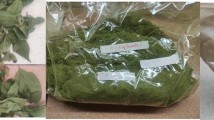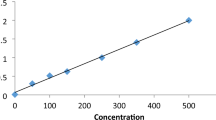Abstract
The structural and antioxidant activity properties of three flavonols kaempferol, galangin and morin have been investigated at density functional level of theory with the aim of verifying experimental findings. The potentialities of antioxidant activity are highly related to their capabilities to scavenge free radicals. Two potential working mechanisms of the hydrogen-atom transfer and single-electron transfer are reported by which antioxidants can play their role. Two parameters of the O-H bond dissociation enthalpy (BDE) and ionization potential (IP) in the presence of water medium are computed to estimate the antioxidant capacities. Results indicate that the order of antioxidant efficacies predicted theoretically in this work is in agreement with that reported by experimental results of oxygen radical-scavenging capacity (ORAC) assay. This demonstrates the importance of the hydrogen-atom and single-electron transfer mechanisms to explain their capacities to scavenge peroxyl radical.



Similar content being viewed by others
References
K.L. Wolfe, R.H. Liu, Structure-activity relationships of flavonoids in the cellular antioxidant activity assay. J. Agric. Food Chem. 56, 8404–8411 (2008)
R.H. Liu, Potential synergy of phytochemicals in cancer prevention: mechanism of action. J. Nutr. 134, 3479S–3485S (2004)
K.L. Wolfe, R.H. Liu, Cellular antioxidant activity (CAA) assay for assessing antioxidants, foods, and dietary supplements. J. Agric. Food Chem. 55, 8896–8907 (2007)
K.L. Wolfe, X. Kang, X. He, M. Dong, Q.Y. Zhang, R.H. Liu, Cellular antioxidant activity of common fruits. J. Agric. Food Chem. 56, 8418–8426 (2008)
F. Ko, C. Chu, C. Lin, C. Chang, C. Teng, Isoorientin-6-Oglucoside, a water-soluble antioxidant isolated from Gentiana arisanensis. Biochem. Biophys. Acta 1389, 81–90 (1998)
M. Novic, Z. Nikolovska, T. Solmajer, Quantitative structureactivity relationship of flavonoid p56lck protein tyrosine kinase inhibitors. A neural network approach. J. Chem. Inf. Comput. Sci. 37, 990–998 (1997)
D. Amic, D. Davidovic, A. Juric, B. Lucic, N. Trinajstic, Structure-activity correlation of flavone derivatives for inhibition of cAMP phosphodiesterase. J. Chem. Inf. Comput. Sci. 35, 1034–1038 (1995)
Y. Uda, K. Price, G. Williamson, M. Rhodes, Induction of the anticarcinogenic marker enzyme, quinone reductase, in murine hepatoma cells in vitro by flavonoids. Cancer Lett. 120, 213–216 (1997)
S. Tahara, Y. Katagiri, J. Ingham, J. Mizutani, Prenylated flavonoids in the root of yellow lupin. Phytochemistry 36, 1261–1271 (1994)
M. Amoros, C.M.O. Simoes, L. Girre, F. Sauvager, M. Cormier, Synergistic effect of flavones and flavonols against herpes simplex virus type 1 in cell culture. Comparison with the antiviral activity of propolis. J. Nat. Prod. 55, 1732–1740 (1992)
A.J. Miller, Antioxidant flavonoids: structure, function, and clinical usage. Altern. Med. ReV. 1, 103–111 (1996)
S.D. Skaper, M. Fabris, V.Q. Ferrari, Quercetin protects cutaneous tissue-associated cell types including sensory neurons from oxidative stress induced by glutathione depletion: cooperative effects of ascorbic acid. Free Radic. Biol. Med. 22, 669–678 (1997)
R.D. Loggia, E. Ragazzi, A. Tubaro, Anti-inflammatory activity of benzoppyrones that are inhibitors of cyclo- and lipooxygenase. Pharmacol. Res. Commun. 20, S91–S94 (1988)
H.P. Kim, I. Mani, V.A. Ziboh, Effects of naturally-occurring flavonoids and biflavonoids on epiderman cyclooxygenase from guinea pigs. Prostaglandins Leukot. Essent. Fat. Acids 58, 17–24 (1998)
J.S. Wright, E.R. Johnson, G.A.D. Labio, Predicting the activity of phenolic antioxidants: theoretical method, analysis of substituent effects and application to major families of antioxidants. J. Am. Chem. Soc. 123, 1173–1183 (2001)
M. Leopoldini, I. Prieto Pitarch, N. Russo, M. Toscano, Structure, conformation and electronic properties of apigenin, luteolin and taxifolin antioxidants. A first principle theoretical study. J. Phys. Chem. B 108, 92–96 (2004)
M. Leopoldini, T. Marino, N. Russo, M. Toscano, Antioxidant properties of phenolic compounds. H-atom versus electron transfer mechanism. J. Phys. Chem. B 108, 4916–4922 (2004)
M. Leopoldini, T. Marino, N. Russo, M. Toscano, Density functional computations of the energetic and spectroscopic parameters of quercetin and its radicals in the gas phase and in solvent. Theor. Chem. Acc. 111, 210–216 (2004)
M.J. Frisch, G.W. Trucks, H.B. Schlegel, G.E. Scuseria, M.A. Robb, J.R. Cheeseman, J.A. Montgomery, T. Vreven, K.N. Kudin, J.C. Burant, J.M. Millam, S.S. Iyengar, J. Tomasi, V. Barone, B. Mennucci, M. Cossi, G. Scalmani, N. Rega, G.A. Petersson, H. Nakatsuji, M. Hada, M. Ehara, K. Toyota, R. Fukuda, J. Hasegawa, M. Ishida, T. Nakajima, Y. Honda, O. Kitao, H. Nakai, M. Klene, X. Li, J.E. Knox, H.P. Hratchian, J.B. Cross, C. Adamo, J. Jaramillo, R. Gomperts, R.E. Stratmann, O. Yazyev, A.J. Austin, R. Cammi, C. Pomelli, J.W. Ochterski, P.Y. Ayala, K. Morokuma, G.A. Voth, P. Salvador, J.J. Dannenberg, V.G. Zakrzewski, S. Dapprich, A.D. Daniels, M.C. Strain, O. Farkas, D.K. Malick, A.D. Rabuck, K. Raghavachari, J.B. Foresman, J.V. Ortiz, Q. Cui, A.G. Baboul, S. Clifford, J. Cioslowski, B.B. Stefanov, G. Liu, A. Liashenko, P. Piskorz, I. Komaromi, R.L. Martin, D.J. Fox, T. Keith, M.A. Al-Laham, C.Y. Peng, A. Nanayakkara, M. Challacombe, P.M.W. Gill, B. Johnson, W. Chen, M.W. Wong, C. Gonzalez, J.A. Pople, Gaussian 03, Revision B.05 (Gaussian, Inc, Pittsburgh, 2003)
A.D. Becke, Density-functional thermochemistry III. The role of exact exchange. J. Chem. Phys. 98, 5648–5652 (1993)
C. Lee, W. Yang, R.G. Parr, Development of the Colle-Salvetti correlation-energy formula into a functional of the electron density. Phys. ReV. B 37, 785–789 (1988)
R. Ditchfield, W.J. Hehre, J.A. Pople, Self-consistent molecularorbital methods: IX. An extended Gaussian-type basis for molecular-orbital studies of organic molecules. J. Chem. Phys. 54, 724–728 (1971)
W.J. Hehre, R. Ditchfield, J.A. Pople, Self-consistent molecular orbital methods: XII. Further extensions of Gaussian-type basis sets for use in molecular orbital studies of organic molecules. J. Chem. Phys. 56, 2257–2261 (1972)
S. Miertus, E. Scrocco, J. Tomasi, Electrostatic interaction of a solute with a continuum. A direct utilization of ab initio molecular potentials for the prevision of solvent effects. Chem. Phys. 55, 117–129 (1981)
S. Miertus, J. Tomasi, Approximate evaluations of the electrostatic free energy and internal energy changes in solution processes. Chem. Phys. 65, 239–245 (1982)
M. Cossi, V. Barone, R. Cammi, J. Tomasi, Ab initio study of solvated molecules: a new implementation of the polarizable continuum model. Chem. Phys. Lett. 255, 327–335 (1996)
V. Barone, M. Cossi, J. Tomasi, A new definition of cavities for the computation of solvation free energies by the polarizable continuum model. J. Chem. Phys. 107, 3210–3221 (1997)
O. Kondo, S.W. Benson, Kinetics and equilibria in the system Br + CH3OOH→HBr + CH3OO*. An upper limit for the heat of formation of the methylperoxy radical. J. Phys. Chem. 88, 6675–6680 (1984)
Acknowledgments
We are grateful for funding from the National Natural Science Foundation of China (31171642, 21276154).
Author information
Authors and Affiliations
Corresponding author
Rights and permissions
About this article
Cite this article
Rong, Y.Z., Wang, Z.W. & Zhao, B. A DFT Study on the Structural and Antioxidant Properties of Three Flavonols. Food Biophysics 8, 90–94 (2013). https://doi.org/10.1007/s11483-012-9276-x
Received:
Accepted:
Published:
Issue Date:
DOI: https://doi.org/10.1007/s11483-012-9276-x




